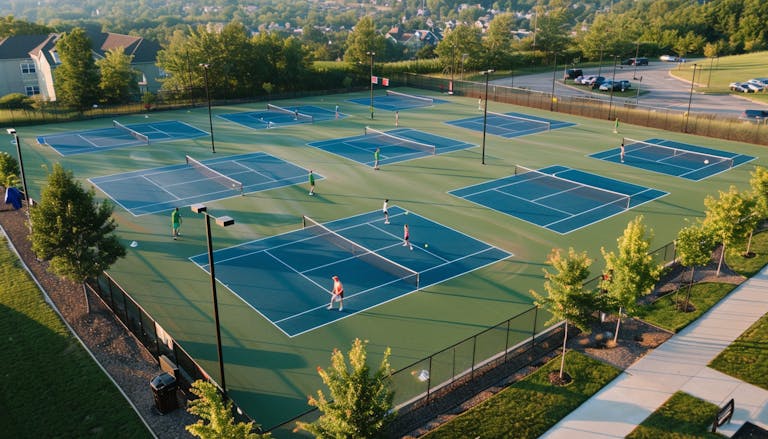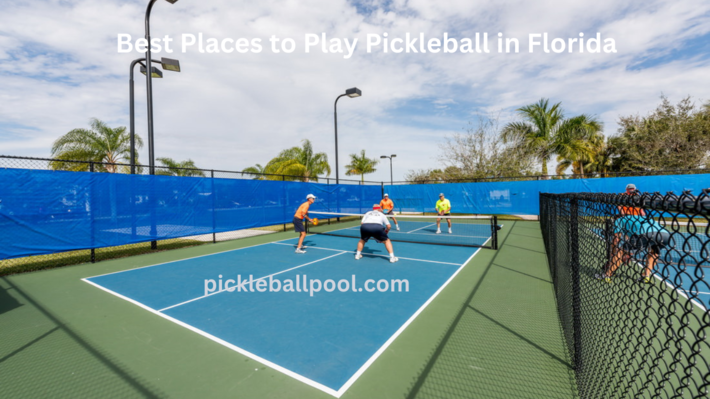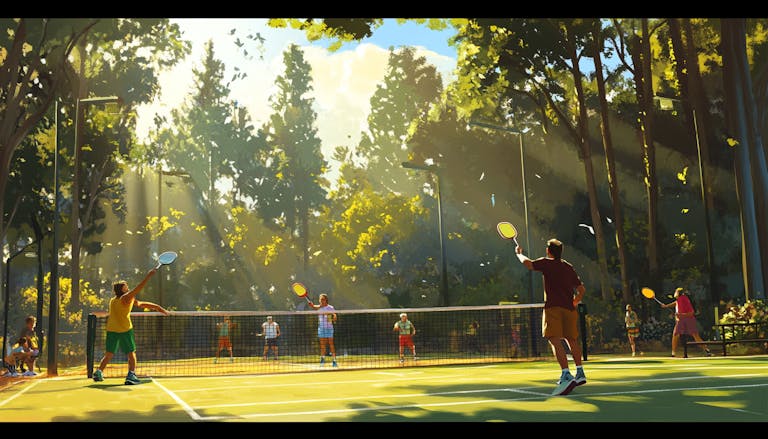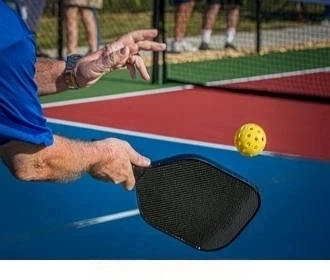Is Pickleball Easier Than Tennis? An analysis of the rules, skills, and physical requirements Is Pickleball Easier Than Tennis?
Is pickleball really easier than tennis? Let’s find out! Many people are curious about these two popular sports. We’ll look at how they’re different in three ways: rules, skills needed, and how hard they are on your body.
If you’ve ever watched tennis or pickleball and wondered which one you should try, this is for you. We’ll compare things like how big the courts are and how you serve the ball. By the end, you’ll know which game might be more fun for you to play.
Whether you’re new to sports or have played before, this info will help you choose. So, are you ready to learn about pickleball and tennis? Let’s get started!
Difference between Pickleball and Tennis
Which Sport Is Harder: Pickleball vs Tennis?
Pickleball and tennis might look alike, but they have some big differences. Both use a court and a net, but pickleball uses a smaller space. Instead of tennis rackets, pickleball players use solid paddles to hit a plastic ball with holes.
Pickleball has some unique features:
- It’s often played as doubles
- There’s a special “no-volley” zone near the net
- Games move faster with more quick hits back and forth
When it comes to learning the game, pickleball is easier:
- It has fewer rules to remember
- The court is smaller, so there’s less ground to cover
- Many people find it quicker to pick up than tennis
Is Pickleball Easier Than Tennis? So while both sports are fun, pickleball might be a good choice if you want an easier start or a fast-paced game.
Court Size: Pickleball and Tennis

One big difference between pickleball and tennis is the court size. Pickleball courts are much smaller:
- Pickleball court: 20 x 44 feet
- Tennis court: 78 x 36 feet
The smaller pickleball court makes the game easier in a few ways:
- Less ground to cover: Players don’t have to run as far or as fast.
- Easier to reach the ball: The ball stays in a smaller area, so it’s easier to get to.
- More time to react: With less space, players have more time to prepare their shots.
- Longer rallies: Players can keep the ball in play longer because they don’t tire out as quickly.
These factors make pickleball easier to play than tennis, especially for beginners or those who might struggle with a larger court.
Equipment: Pickleball vs Tennis
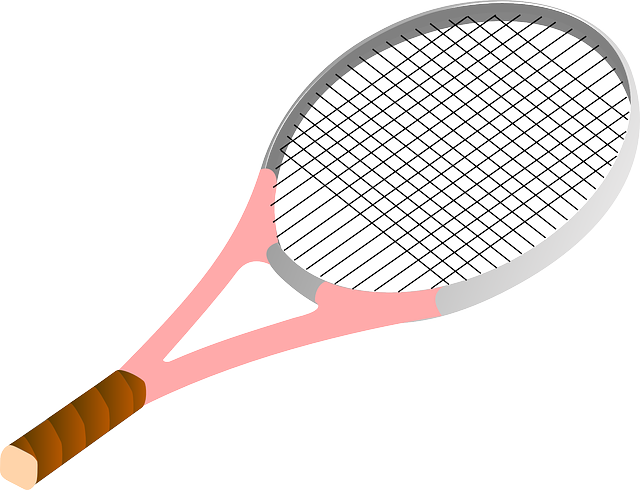
Pickleball equipment is generally easier for beginners to use compared to tennis gear. One of the key differences is in paddle size; pickleball paddles are larger than tennis racquets, providing a bigger “sweet spot” that makes it easier to hit the ball effectively.
Additionally, pickleball paddles are lighter, which reduces arm fatigue and allows players to play longer without tiring. The design of the balls also contributes to this accessibility—pickleball balls have holes that make them bounce and move more predictably.
This design feature aids in ball control, allowing beginners to keep the ball in play more easily and enabling them to rally (hit back and forth) sooner.
These equipment differences significantly benefit new players by helping them enjoy the game faster, learn more quickly, and feel less frustrated during their initial experiences. Overall, pickleball’s gear is more beginner-friendly than tennis equipment, making it an appealing choice for those just starting out.
Scoring Pickleball vs Tennis
Tennis is known for its complex scoring system involving 15, 30, 40, deuce, advantage, and game points. Mastering this convoluted scoring structure poses a notorious barrier.
By contrast, pickleball uses essential ping pong-style scoring to score 11 points (win by 2). The simplicity keeps games fast-paced and easier to follow. Straightforward scoring lowers one of tennis’ main barriers.
| Factor | Pickleball | Tennis |
| Court Size | Small (easier to cover) | Large (more ground to cover) |
| Equipment | Lighter paddle/ (more control) | Heavier racquet/ (less control) |
| Scoring | Simple (to 11) | Complex (15, 30, 40 etc) |
| Rules | Align closely with tennis | More complex, but familiar to tennis players |
| Serving | Wider service boxes (easier) | Tougher margin of error |
| Volleys | More reaction time | Less room for error |
| Physical Intensity | Lower impact | More demanding sprints/motion |
| Learning Resources | Growing ecosystem | Mature ecosystem, ample resources |
| Social Environment | Laidback, beginner friendly | More hardcore competitive vibe |
Here is a table comparing pickleball and tennis on factors that impact difficulty and accessibility:
Rules of Pickleball and Tennis player
Pickleball rules are similar to tennis, but with some unique twists:
- The “kitchen” rule:
- There’s a no-volley zone near the net
- Players can’t hit the ball in the air while in this area
- Double bounce rule:
- The ball must bounce once on each side before volleys are allowed
- Soft scoring:
- Only the serving team can score points
- Games are usually played to 11 points
Despite these differences, pickleball feels familiar to tennis players:
- Serving is similar
- Ground strokes and volleys are used
- Court positioning is alike
This makes pickleball easier for tennis players to learn compared to sports like badminton or table tennis. The basic idea of the game is close to tennis, so it’s not a big jump to understand and enjoy pickleball.
Serving Pickleball vs Tennis
Pickleball serving is easier than tennis serving:
- Similar motion:
- Pickleball and tennis serves look alike
- But pickleball has a lower toss and below-waist contact
- Larger service area:
- Pickleball has bigger service boxes
- More room for error when serving
- Shorter distance:
- Less power needed for pickleball serves
- Easier on the arm and shoulder
- Drop-serve option:
- Can start with a bounce, then hit
- Takes pressure off learning a perfect serve
- Easier to start rallies:
- Beginners can get games going faster
- Less frustration when learning
Overall, pickleball’s serving rules are more beginner-friendly than tennis, helping new players enjoy the game sooner.
Volleys of Tennis and Pickleball
Pickleball volleys are easier than tennis volleys:
- Court size:
- Smaller pickleball court means less ground to cover
- Players stay closer to the net
- More frequent volleys:
- Lower net height encourages more volley play
- Players get more practice with volleys
- Extra reaction time:
- Slower ball speed in pickleball
- Court layout gives players more time to prepare
- Easier to learn:
- Forehand and backhand volleys feel more natural
- New players pick up the technique quicker
- Less pressure:
- Tennis volleys require faster reactions
- Pickleball is more forgiving, especially for beginners
- Better for beginners:
- Pickleball’s setup helps new players succeed at volleys
- Builds confidence and enjoyment faster
Overall, pickleball’s court design and gameplay make volleys more accessible and enjoyable for new players compared to tennis.
Physical Intensity: is Pickleball Easier to Learn
A study by researchers at the University of Waterloo directly compared exercise intensity between pickle and tennis. They monitored adult participants aged 18–40 playing both sports.
The study found that pickle provided an “equivalent level of aerobic exercise” compared to tennis. However, pickle delivered a “lower perception of joint strain” versus tennis play.
The data suggests pickle can confer similar fitness benefits with less musculoskeletal impact due to fewer explosive sprints and extreme reaches. The result is more playability for beginners.
Learning Resources: Pickleball or Tennis?
As one of the world’s most popular sports, tennis boasts endless free resources for new players – whether YouTube tutorials, articles, blogs, camps, or adult beginner clinics. Local access is straightforward.
As a newer sport, pickle has a comparatively smaller (though growing) educational ecosystem. Published content, coaching access, and public lessons have yet to be as abundant. The DIY learning curve is steeper.
Tennis’ established instructional infrastructure gives newcomers a smooth onboarding pathway. Pickle can’t match this turnkey training environment currently.
Social Environment
The social nature of pickleball is a significant selling point and contrasts with tennis’s more serious vibe. The frequent chatter, laughter, and casual play on pickleball courts accompany the friendlier and court size.
Less performance pressure exists in social pickleball, enabling more mistakes and fun interactions. Open mixed doubles play also adds to the chill atmosphere. Solo beginners can walk on and be welcomed.
Tennis tends to attract more hard-core competitors seeking matches. New players may feel hesitant about joining round robins or drill groups uninvited. The social cushion helps ease entry into pickleball.
Summary: Advantages Favouring Pickleball
After dissecting key gameplay elements, pickleball does appear innately easier to pick up compared to tennis for the following principal reasons:
- Smaller court size
- Larger paddle face and forgiving plastic
- Simplified scoring system
- Lower barrier on serves and volleys
- Less physically demanding on the body
- More social and beginner-friendly environment
However, experienced players also caution against underestimating pickleball. Mastering control, finesse shots, strategy, and reflexes still requires practice. But the initial access hurdles are lower.
Exceptions: Situations Favoring Tennis
Tennis can provide a more accessible starting point than pickleball in specific scenarios:
- Young children learning racket sports – mini tennis courts, rackets, and foam s are tailored to kids
- Access to top-tier tennis coaching and programs from a young age
- Pickle’s learning curve later in life with no racket experience
- Availability of tennis courts and partners in a local area
- Player experience levels up faster in tennis through frequent competition
So while pickleball simplifies aspects for new recreational players, it’s only sometimes more accessible under certain circumstances.
The Verdict
Based on an objective analysis across key gameplay elements that determine a sport’s accessibility and difficulty:
Pickleball generally offers a gentler learning curve and lower barrier to entry than tennis, especially for adult beginners seeking recreation.
But it requires practice time to hone skills in either sport – just a shorter ramp-up period to gain pickleball competence at a basic level. Both offer richness as players progress.
Conclusion: Is Pickleball Easier Than Tennis?
Pickleball’s popularity is rapidly increasing due to its accessibility compared to other racket sports. One reason for this is the court setup; the smaller court size means less running and makes it easier for players to cover the playing area. The equipment also plays a role, as pickleball features lighter paddles and specially designed balls that are more forgiving for beginners.
You May like: Best pickleball paddle for beginners
The rules of pickleball are simpler to learn, maintaining similarities with tennis but incorporating beginner-friendly changes. Serving in pickleball is easier as well, allowing new players to get the ball in play with less pressure. Additionally, volleys occur more frequently and are generally easier to manage, which helps build confidence quickly among newcomers.
The social aspect of pickleball contributes significantly to its appeal, making it fun and friendly for players of all ages. While pickleball provides an easier entry point for beginners, tennis offers greater challenges as players improve their skills. Both sports promote active lifestyles and can complement each other rather than compete.
Ultimately, pickleball stands out as the more accessible sport for beginners, but both games have valuable roles in helping people enjoy racket sports.
FAQs
Q: Is pickleball or tennis easier on the knees and joints?
A: Studies show pickleball provides a lower-impact cardio workout. The smaller court reduces sudden sprints and abrupt stops that jar the body. Smooth lateral mobility is favored.
Q: Can tennis skills directly transfer to pickleball?
A: Many tennis skills, like groundstrokes, volleys, and serves, can be converted to pickleball. But essential technique adjustments are required for paddle, , and court differences.
Q: Which is easier to learn as a senior new to racket sports?
A: Due to fewer mobility demands and fast onboarding, pickleball is extremely popular among seniors. The social nature also appeals. But tennis coaching can adapt too.
Q: Is strategy easier in pickleball vs. tennis?
A: The pickleball strategy is easier to grasp initially. But chess-like tennis strategies offer greater complexity as abilities grow. Both sports reward strategic thinking.
Q: Can pros excel at both tennis and pickleball simultaneously?
A: Some skilled players do compete at high levels in both sports. But conflicting muscle memories and schedules make doubling up challenging. Most focus on one or the


